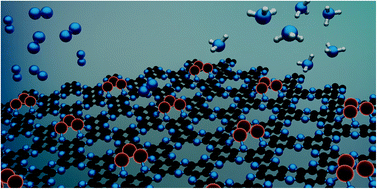Tantalum based single, double, and triple atom catalysts supported on g-C2N monolayer for effective nitrogen reduction reaction: a comparative DFT investigation†
Abstract
Design of efficient and low cost electrocatalysts for the reduction of N2 molecule to NH3 in a green manner remains a great challenge in the 21st century. Herein, we have used density functional theory based first principle simulations to systematically investigate the nitrogen reduction reaction (NRR) ability of single, double, and triple Ta-atom catalysts anchored to C2N monolayer. Our results demonstrate that the single and triple Ta-atom catalysts anchored to C2N monolayer act as superior catalysts for the NRR via alternating and distal pathways as compared to the Ru(0001) stepped surface. In particular, the triple Ta-atom catalyst anchored to C2N shows enhanced NRR performance with a limiting potential of −0.72 V which is comparable to the experimentally reported Ru based single atom catalyst. Further, all the three catalysts were found to be highly selective for NRR with an enhanced ability to suppress the competitive hydrogen evolution reaction. Electronic structure analysis revealed that the enhanced ability of Ta3@C2N catalyst to effectively capture and reduce N2 molecule could be attributed to the built up of localized d states near the fermi level, thereby aiding in strong electron transfer into the antibonding orbitals of N2. Thus, our findings propose a highly active catalyst for the NRR with an emphasis on the importance of triple atom-based catalysts for electrocatalytic applications.



 Please wait while we load your content...
Please wait while we load your content...